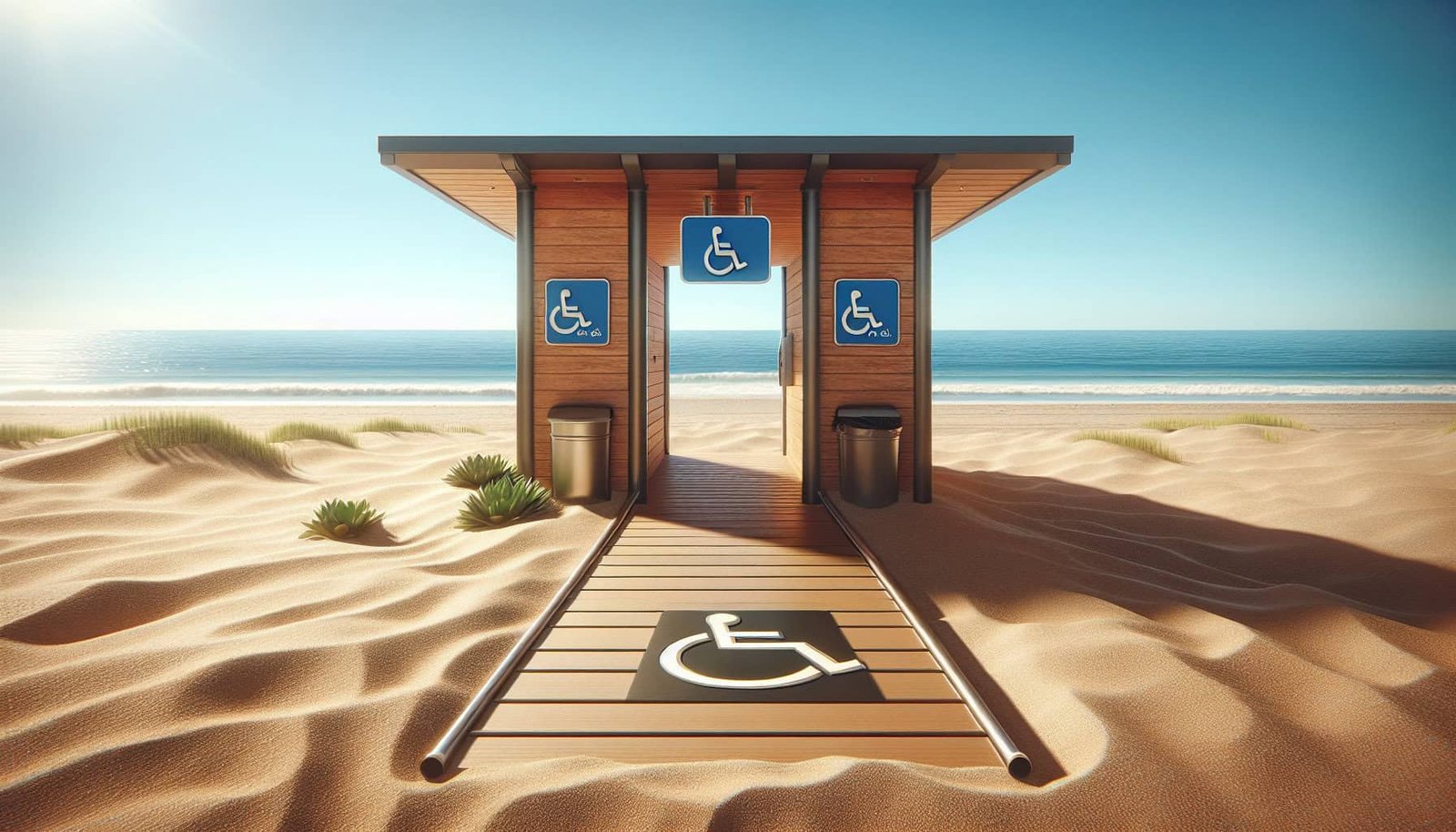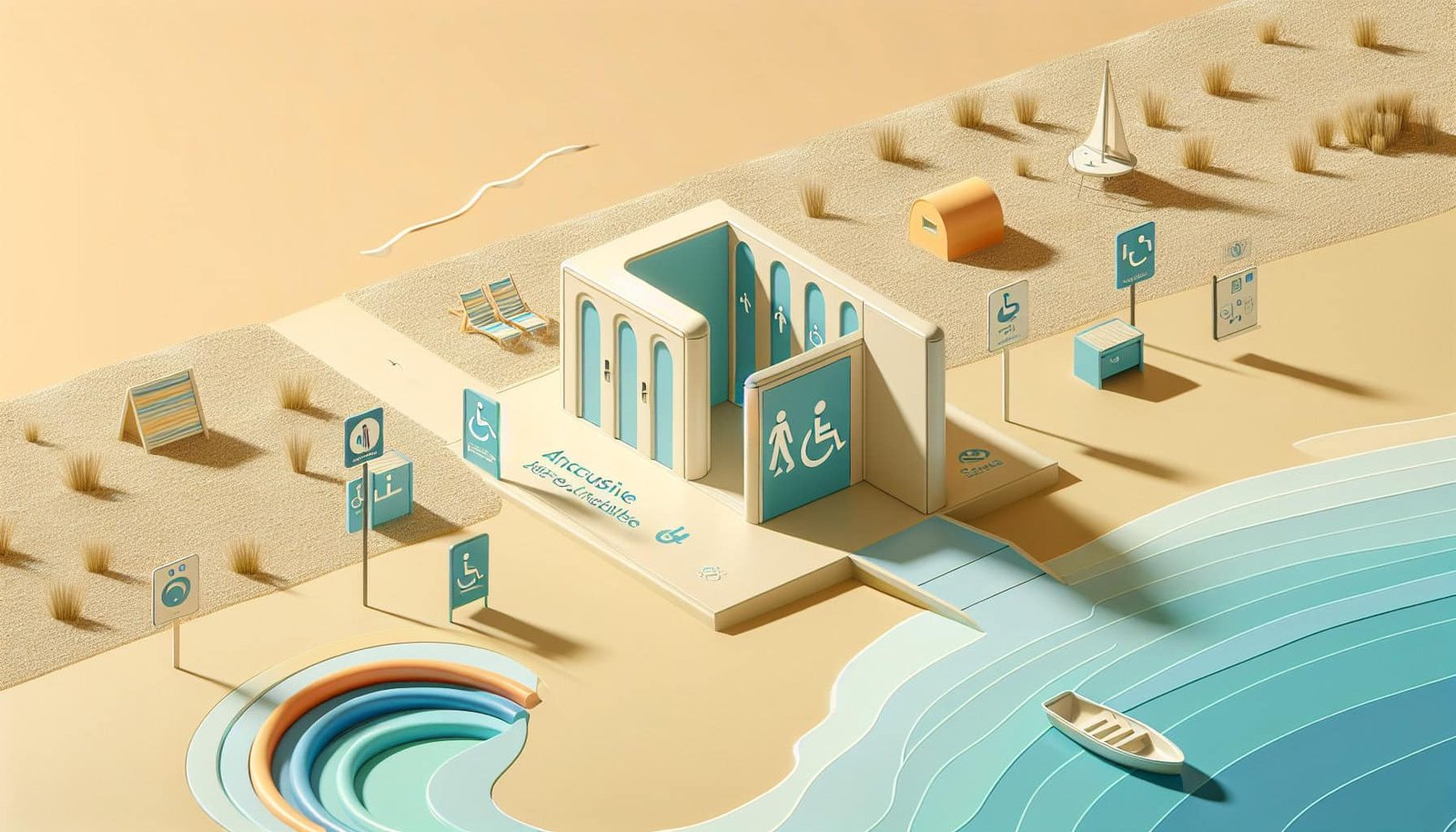You’re planning a day at the beach, soaking up the sun, and enjoying the sound of crashing waves. But what about when nature calls? Will you have to wander aimlessly, searching for a restroom that meets your needs? Fear not, because in this article, we will explore whether you can find information on the accessibility of public restrooms at certain beaches. So, grab your sunscreen and let’s dive into all the details you need to know before enjoying a beach day without any worries.
Factors to Consider When Assessing the Accessibility of Public Restrooms
When it comes to assessing the accessibility of public restrooms, there are several important factors to consider. By taking these factors into account, you can ensure that the facilities meet your specific needs and allow you to enjoy your beach visit to the fullest. Here are some key factors to consider when assessing the accessibility of public restrooms.
Location
The location of the public restroom is an important consideration when assessing its accessibility. Ideally, the restroom should be conveniently located near the beach area, reducing the distance you need to travel. This is especially crucial for individuals with mobility limitations or other disabilities. The proximity of the restroom to the beach also ensures quick and easy access, allowing you to make the most of your time at the beach.
Physical Accessibility
Physical accessibility is another vital factor to consider. Public restrooms should be designed and equipped to accommodate people with disabilities. This includes features such as ramps or level access to the restroom entrance, wide doorways to accommodate wheelchairs, accessible toilets, and grab bars. Additionally, it is important to assess the adequacy of pathways leading to the restroom, ensuring they are level and free from obstructions.
Amenities and Facilities
The amenities and facilities provided within the restroom are crucial to ensure a comfortable and convenient experience for all visitors. Look for features like accessible sinks, soap dispensers, hand dryers, or paper towels placed at an accessible height. Moreover, amenities like baby changing tables and private breastfeeding areas can significantly enhance the accessibility of the restroom.
Maintenance and Cleanliness
Maintaining cleanliness and hygiene is paramount for any public restroom, regardless of accessibility. Regular cleaning schedules and well-stocked supplies of toilet paper, soap, and hand sanitizer are essential. By assessing the overall cleanliness and maintenance of the restroom, you can ensure a pleasant and safe experience for yourself and others.
Gender-Neutral Restrooms
Gender-neutral restrooms have become increasingly important in promoting inclusivity and accessibility. These restrooms are designed to accommodate individuals who may not identify as strictly male or female, as well as those who require assistance from a caregiver of a different gender. Assessing the availability of gender-neutral restrooms in beach areas can be crucial for ensuring equal access for all individuals.
Government Resources
In your search for information on the accessibility of public restrooms at certain beaches, government resources can be valuable sources of information. Here are some government websites that provide relevant information:
Local Government Websites
Local government websites often provide information on beach facilities, including the accessibility of public restrooms. These websites may offer details on the specific features and amenities available, as well as any recent accessibility upgrades made to the restrooms. By visiting the websites of the relevant local government authorities, you can access accurate and up-to-date information about the accessibility of public restrooms at certain beaches.
National Park Service
If you’re visiting a beach located within a national park, the National Park Service website can provide valuable information on the accessibility of public restrooms. The National Park Service is committed to ensuring equal access and inclusion for all visitors. Through their website, you can find details about accessible facilities, including restrooms, along with any additional resources or information specifically related to beach accessibility.
Department of Health and Human Services
The Department of Health and Human Services also plays a significant role in promoting accessibility and inclusivity. Their website may provide resources, guidelines, or regulations related to accessible public restrooms and facilities. Additionally, they may offer information on any initiatives or programs that focus on improving accessibility at beaches or other recreational areas.

Online Directories and Databases
Online directories and databases can be helpful tools for finding information on the accessibility of public restrooms at certain beaches. These resources provide user-submitted reviews, ratings, and detailed information about various accessible facilities. Here are a few online directories and databases worth exploring:
AccessibleGO
AccessibleGO is an online platform that allows users to search for and review accessible facilities, including restrooms, at various locations, including beaches. The platform features comprehensive information on the accessibility features and user experiences of different restrooms. By utilizing AccessibleGO, you can access valuable firsthand insights from individuals who have visited the specified beaches.
National Public Toilet Map
The National Public Toilet Map, available on their website, provides information on publicly accessible restrooms across Australia. While the map focuses on restrooms throughout the country, it can be particularly useful for finding accessible restroom facilities at beaches. This resource allows you to search for restrooms that meet your specific accessibility requirements and provides directions to the nearest facility.
WheelMate
WheelMate is a mobile application designed to help individuals with mobility disabilities find accessible restrooms and parking spaces. The app allows users to locate and rate accessible facilities, including restrooms, based on their own experiences. The user-generated content provides valuable insights into the accessibility of restrooms at certain beaches, making it a valuable resource for your search.
Beach-Specific Websites or Forums
When looking for information on the accessibility of public restrooms at certain beaches, websites and forums dedicated to specific destinations or beach areas can be valuable resources. These platforms often feature user-generated content, reviews, and discussions about the accessibility of various facilities within the area. Here are a few beach-specific websites and forums to explore:
Beach Websites
Many popular beach destinations have their own dedicated websites that provide information on beach facilities, including public restrooms. These websites may have sections specifically tailored to accessibility or include user reviews and ratings of the facilities. By visiting the websites of the beaches you plan to visit, you can gain insight into the accessibility of their restrooms.
Beach Forums
Participating in beach forums or online communities focused on specific beach areas can also provide valuable information on the accessibility of public restrooms. These forums often have threads or discussions dedicated to sharing experiences and recommendations regarding accessible beach facilities. By engaging with fellow beachgoers and individuals with firsthand experience, you can gather valuable information to help inform your decision.

Accessible Beach Ratings and Reviews
Travel websites and apps, as well as disability-specific websites and forums, are excellent sources of accessible beach ratings and reviews. These platforms allow individuals to rate and review specific beaches, including the accessibility of their restroom facilities. Here are some online resources worth exploring:
Travel Websites and Apps
Popular travel websites and apps frequently include sections dedicated to accessible travel or provide filters to search for accessible locations. These resources often feature user reviews that discuss the accessibility of beaches and their restroom facilities. By consulting these reviews, you can gain firsthand insights into the suitability of the facilities for your specific needs.
Disability-Specific Websites and Forums
Websites and forums specifically designed for individuals with disabilities can also provide invaluable information on the accessibility of beach facilities. These platforms focus on sharing experiences, recommendations, and resources related to accessibility. By utilizing these resources, you can access targeted information that caters to the needs and challenges faced by individuals with disabilities.
Reaching Out to Local Disability Organizations
Local disability organizations can be excellent sources of information and support when assessing the accessibility of public restrooms at certain beaches. These organizations are often well-connected within their communities and may have firsthand knowledge of the accessibility features and precautions taken at local beaches. Here are some avenues to explore:
Disability Advocacy Groups
Disability advocacy groups operate with the goal of promoting the rights and well-being of individuals with disabilities. These groups often have extensive knowledge about accessibility concerns and can provide valuable insights into the accessibility of public restrooms at certain beaches. By reaching out to local disability advocacy groups, you can tap into their expertise and gain a deeper understanding of the accessibility measures in place.
Nonprofit Organizations
Nonprofit organizations that focus on disability issues may also provide helpful information on accessible beach facilities, including restrooms. These organizations often engage with local communities and may have resources or contacts dedicated to enhancing accessibility. By contacting relevant nonprofit organizations, you can inquire about the accessibility of public restrooms at specific beaches and receive guidance tailored to your needs.

Contacting Beach Management Authorities
Directly contacting beach management authorities can provide you with accurate and up-to-date information on the accessibility of public restrooms. These authorities are responsible for maintaining and overseeing beach facilities, including restrooms. By reaching out to them, you can obtain reliable information and clarification on any specific accessibility concerns. Here are some key contacts to consider:
Park Rangers and Visitor Centers
Park rangers and visitor centers are typically knowledgeable about the facilities available at specific beaches, including the accessibility of restrooms. They are often the frontline staff responsible for assisting visitors and can provide useful information on restroom accessibility features, recent upgrades, or any upcoming improvements. Consulting these resources can provide you with reliable and current information.
Lifeguards
Lifeguards stationed at the beach can also offer insights into the accessibility of restroom facilities. They are well-versed in the layout and features of the beach area and often have direct knowledge of the accessibility measures in place. By approaching lifeguards and inquiring about the accessibility of restrooms, you can obtain valuable information and guidance during your visit.
Beach Managers
Beach managers or facility managers are key individuals responsible for the upkeep and maintenance of beach facilities. They possess detailed knowledge of the restrooms’ accessibility features and conditions. By contacting beach managers, either through email or phone, you can gain a comprehensive understanding of the accessibility measures in place and any plans for future improvements.
Utilizing Social Media Platforms
Social media platforms can serve as effective tools for gathering information and connecting with individuals who have firsthand knowledge of the accessibility of public restrooms at certain beaches. Here’s how you can utilize them:
Facebook Groups
Facebook groups dedicated to accessible travel or specific beach areas can be valuable resources for gathering information on restroom accessibility. These groups allow members to share experiences, ask questions, and provide recommendations. By joining relevant Facebook groups and engaging with the community, you can tap into a wealth of shared knowledge and experiences.
Twitter Hashtags
Searching for relevant Twitter hashtags can provide a real-time stream of information related to the accessibility of public restrooms at certain beaches. Hashtags like #AccessibleBeaches or #AccessibilityReviews can help you discover conversations, recommendations, or recent updates related to the accessibility of beach restrooms. By actively following and engaging with these hashtags, you can stay informed and connect with individuals who have relevant insights.

Crowdsourcing Information
Crowdsourcing information through discussion boards and social Q&A websites can provide diverse perspectives and firsthand experiences regarding the accessibility of public restrooms at certain beaches. Here are a few platforms to explore:
Discussion Boards
Online discussion boards dedicated to beach-related topics or accessibility concerns can be treasure troves of information. These boards often feature threads or discussions where individuals share their experiences, recommendations, and concerns. By participating in these discussions or simply reading through them, you can gather valuable insights and gauge the accessibility of public restrooms at certain beaches.
Social Q&A Websites
Social Q&A websites like Quora or Reddit can also be excellent platforms for seeking and sharing information about beach accessibility. By posting specific questions or browsing through existing discussions, you can access a wealth of knowledge from individuals who have visited the beaches you’re interested in. These platforms often offer diverse perspectives, making them valuable resources for your accessibility research.
Alternative Options for Accessible Restroom Facilities
In some cases, if accessible public restrooms are not available at certain beaches, there may be alternative options to consider. While these options may not be ideal, they can provide a temporary solution for your restroom needs. Here are a couple of alternatives to consider:
Portable Restroom Facilities
Temporary portable restroom facilities are often set up at beach areas during peak season or events. These facilities may include accessible options to accommodate individuals with disabilities. It’s worth checking with event organizers or contacting local beach management authorities to inquire about the availability of portable restroom facilities and their accessibility features.
Nearby Commercial Establishments
If accessible public restrooms are not readily available at the beach, nearby commercial establishments, such as restaurants, cafes, or hotels, may have accessible restroom facilities. While these options may require a short trip away from the beach area, they can provide a suitable alternative for accessing accessible restrooms. By checking with local businesses in the vicinity of the beach, you can identify accessible restroom options nearby.
In conclusion, assessing the accessibility of public restrooms at certain beaches requires consideration of various factors. By evaluating the location, physical accessibility, amenities and facilities, maintenance and cleanliness, and the availability of gender-neutral restrooms, you can make informed decisions about the suitability of the facilities for your specific needs. Government resources, online directories and databases, beach-specific websites or forums, accessible beach ratings and reviews, local disability organizations, beach management authorities, social media platforms, and crowdsourcing information are all valuable resources for gathering accurate and up-to-date information. Additionally, exploring alternative options, such as portable restroom facilities or nearby commercial establishments, can provide temporary solutions if accessible public restrooms are not readily available. By taking these factors and resources into account, you can ensure a more accessible and enjoyable beach experience.

